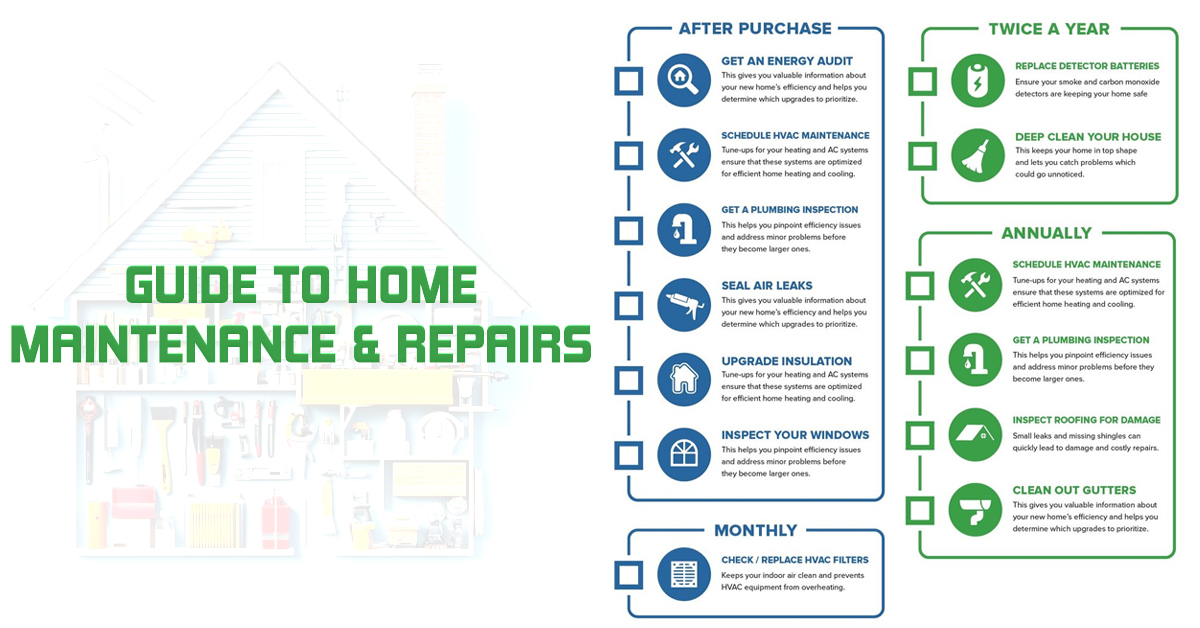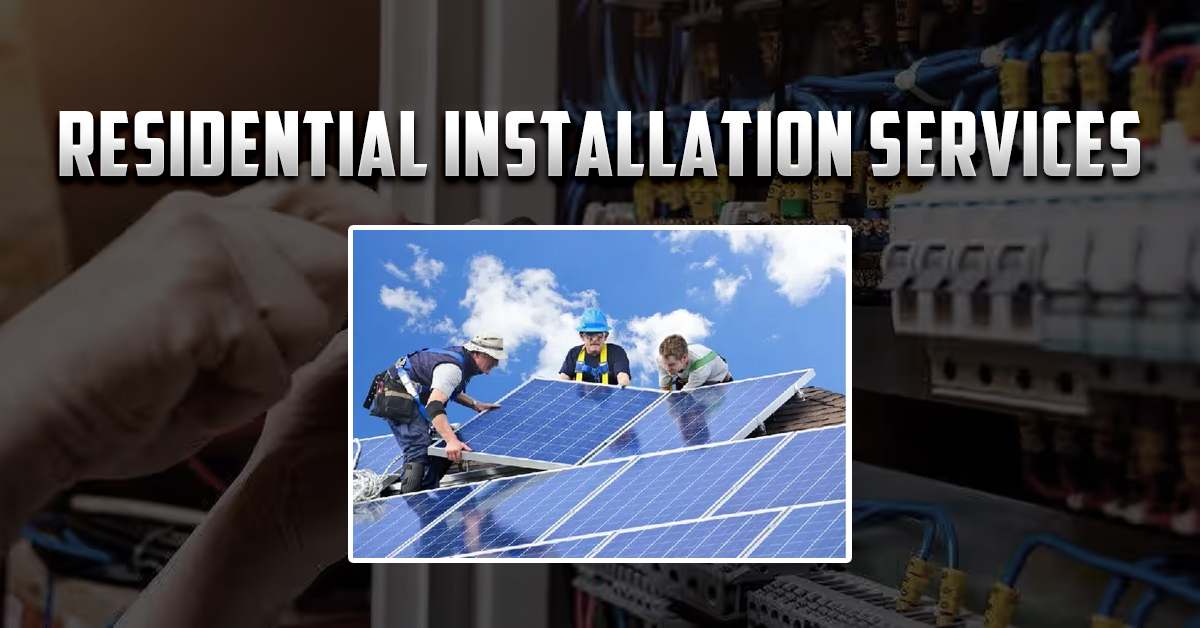Establishing a Routine for Home Maintenance
A home maintenance routine keeps your property in excellent condition and prevents costly repairs. Regular checks ensure all systems function smoothly, while seasonal tasks help prepare your home for changing weather conditions.

Monthly Home Maintenance Tasks
Performing these tasks monthly helps maintain the safety and efficiency of your home:
- Test Safety Devices: Check smoke and carbon monoxide detectors. Replace batteries if necessary.
- HVAC System: Replace filters and inspect heating and cooling systems for proper function. Clean filters to improve air quality and efficiency.
- Water Leaks: Inspect sinks and faucets for leaks. Replace faucet washers if you notice drips.
- Appliance Maintenance: Clean the lint filter in your dryer before and after each use to reduce fire hazards.
Seasonal Home Maintenance Strategies
Seasonal tasks prepare your home for changing weather conditions and ensure year-round functionality:
- Spring: Deep clean windows, power-wash siding, and touch up any chipped paint on the exterior.
- Summer: Maintain your lawn and garden. Inspect your deck or patio for damage and make necessary repairs.
- Fall: Clean gutters to ensure proper drainage and prevent ice dams. Inspect your roof for missing or damaged shingles.
- Winter: Check for drafts and seal gaps around windows and doors. Consider replacing old windows with energy-efficient models.
Safety and Prevention Measures
Ensuring safety and preventing accidents at home is crucial. Effective measures like installing detectors and maintaining home insulation can safeguard against common risks.
Smoke and Carbon Monoxide Detectors
Smoke and carbon monoxide detectors are essential devices for any home. Smoke detectors help alert you to fires, providing early warnings that can save lives. It’s important to test smoke detectors monthly to ensure they work correctly. The batteries should be replaced at least once a year.
Carbon monoxide detectors are also critical, as carbon monoxide is a colorless and odorless gas that can be lethal. Place these detectors near bedrooms and on every floor to ensure proper coverage. Always follow the manufacturer’s instructions for installation and maintenance to keep them functioning effectively.
Weatherproofing and Insulation
Proper weatherproofing and insulation help prevent air and water leaks, which can damage your home and increase energy costs. Weatherstripping can be applied around doors and windows to block drafts and improve energy efficiency.
Insulation in walls, attics, and basements helps maintain comfortable indoor temperatures and reduces the workload on heating and cooling systems. This not only saves energy but also reduces utility bills. Regularly check for water damage and repair any leaks promptly to avoid problems like mold and structural issues. These proactive steps are crucial for maintaining a safe and efficient household.
Functional Systems Maintenance
Maintaining your home’s essential systems is crucial to prevent costly repairs and ensure they run efficiently. Focus on key areas like your HVAC systems, plumbing, and water systems for a comfortable and worry-free home.
Heating, Ventilation, and Air Conditioning (HVAC)
Regular HVAC maintenance keeps your home comfortable and reduces energy costs. Key tasks include:
- Filter Replacement: Change HVAC filters every three months to improve air quality and system efficiency.
- Appliance Care: Clean refrigerator coils to prevent overheating and ensure smooth operation.
- Thermostat Check: Regularly test your thermostat to ensure it’s working correctly.
- Professional Inspection: Schedule an annual inspection to spot potential issues, such as refrigerant leaks or blocked drainage lines.
These steps can extend the lifespan of your HVAC system and help it operate at its best.
Plumbing and Water Systems
Proper plumbing maintenance prevents leaks and water-related issues. Key tasks include:
- Pipe Inspections: Check for drips, blockages, or signs of wear in pipes.
- Clog Prevention: Clear clogs promptly from sinks and showers to maintain the drainage system.
- Water Softener Care: Monitor salt levels and follow manufacturer instructions for maintenance.
- Water Heater Maintenance: Drain your water heater annually to remove sediment build-up and inspect connections and valves for leaks or wear.
These practices help prevent unexpected plumbing emergencies and ensure efficient water usage in your home.
Structural Integrity and Exterior Upkeep
Maintaining your home’s structure and exterior is essential for safety and longevity. Key areas include roof and gutter care, as well as landscaping.
Roof and Gutter Maintenance
Regular inspection of your roof helps prevent leaks. Look for missing shingles or any signs of wear. Fixing these issues early can prevent costly repairs.
Cleaning gutters and downspouts is an important task. Blocked gutters can lead to water damage. Aim to clear them at least twice a year. Consider using gutter guards to reduce debris buildup. Make sure your gutters direct water away from your home’s foundation.
Scheduled tasks and quick fixes protect your home from weather damage and improve its lifespan.
Landscaping and Exterior Aesthetics
Keep your yard neat to boost your home’s curb appeal and protect its structure. Trim trees and bushes regularly. This helps prevent overgrowth and reduces risks of branches damaging your property during storms.
Proper landscaping can also improve drainage. Ensure water moves away from the house to avoid foundation issues. Use mulch and edging to maintain a clean garden look and support plant health.
With consistent care, landscaping enhances your property visually while contributing to its structural health. Prioritize routine checks and maintenance to keep everything in top shape.
Protecting Your Home from Common Threats
Maintaining a safe home involves addressing risks like pests and wear. These threats, if ignored, can escalate into bigger problems, affecting your home’s value and comfort.
Pest Control
Pests, like termites and rodents, can cause significant damage. Regular inspections are key. Look for signs such as droppings, chewed wires, or hollow-sounding wood.
Seal entry points to prevent them from entering. Cracks around doors and windows should be fixed. Consider professional pest control, especially if you notice persistent issues.
Natural remedies, such as peppermint oil for mice, also help. Keep your yard tidy to avoid attracting pests. Eliminate standing water to reduce mosquito breeding. Manage waste, ensuring bins are sealed tightly.
Dealing with Wear and Tear
Wear and tear in homes is common. Regular maintenance will help. Check for peeling paint, which can mean moisture problems or exposure to harsh weather. Repainting protects surfaces from further damage.
Inspect your home for water damage signs, like stains or mold. Quickly address any leaks to prevent further issues. Additionally, gutters should be clean to ensure proper drainage and avoid damage.
Check the integrity of roofing materials. Replace broken tiles and clear debris. Regularly maintaining HVAC systems keeps them efficient and extends their lifespan. Pay attention to strange noises from appliances as they may need repairs.
Frequently Asked Questions
Home maintenance doesn’t have to be overwhelming. With proper planning and budgeting, you can keep your property in excellent condition. Here are answers to some common questions to guide you.
1. What type of maintenance does a house need?
Your home requires regular checks and repairs to avoid costly problems. Common tasks include:
- Examining the roof for wear
- Cleaning gutters
- Checking the water heater
- Inspecting electrical systems
- Servicing HVAC units
2. How do I create a home maintenance schedule?
Follow these steps to build an effective schedule:
- List all necessary maintenance tasks for your home.
- Divide tasks by season or month to ensure nothing is missed.
- Set reminders to keep up with the schedule and manage tasks more easily.
3. What items should be included in a yearly home maintenance checklist?
A comprehensive yearly checklist should include:
- Roof inspection
- Gutter cleaning
- Plumbing checks
- HVAC servicing
- Paint touch-ups
- Checking for leaks
- Sealing gaps in windows and doors
4. How do I estimate home maintenance costs?
Set aside 1-3% of your home’s value annually for maintenance and repairs. Adjust based on:
- Your home’s age
- Its overall condition
- The complexity of systems and features
This budget covers both expected maintenance and emergency repairs.
5. How to keep track of home maintenance activities?
Use a planner or digital tool to log maintenance tasks. Record:
- Completed tasks
- Dates of service
- Service provider details
Keeping receipts and notes helps you track when tasks were done and when they need to be repeated.
6. What is a maintenance plan for a house, and how can I develop one?
A home maintenance plan outlines regular tasks to keep your home in good shape. To develop one:
- Identify essential tasks, like HVAC servicing and gutter cleaning.
- Schedule tasks by season or frequency.
- Allocate a budget for regular and emergency repairs.
Adjust your plan as needed based on your home’s condition or specific needs.



